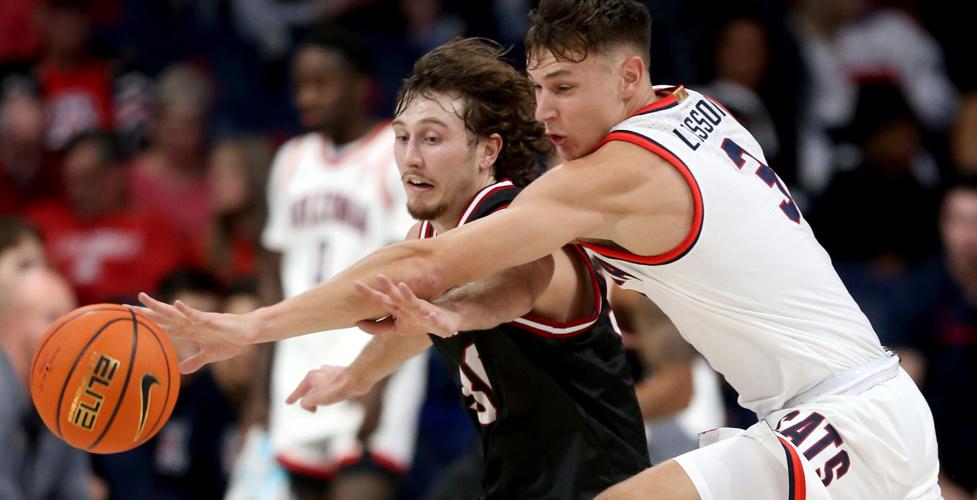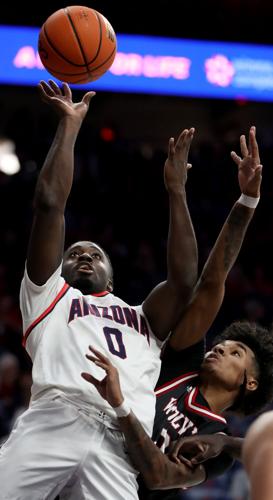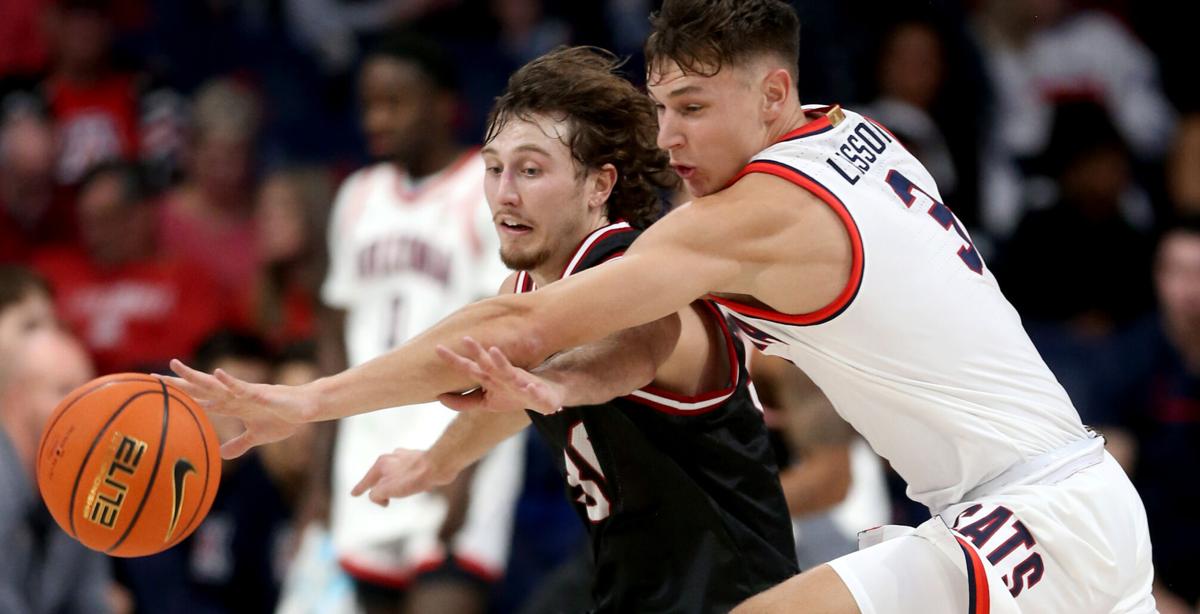Smack in the middle of football season — and with the Pac-12 seeking security amid an existential crisis — here comes the basketball season.
Competition begins Monday, with all 12 teams in action.
The Hotline has identified 10 storylines to watch in the Pac-12 over the next five months:
1. Clearing the COVID fog
This is the most interesting topic of 2022-23 and closely parallels the situation with football.
In our view, COVID-19 severely impacted the Pac-12’s collective performance last season, even though the pandemic was largely contained.
How? The policies and protocols lingering throughout the spring and summer of 2021 undermined preparation and impacted performance when competition ramped up in November.
The nonconference results were awful, and that affected success on Selection Sunday.
But the past six months have allowed business to proceed as usual, and the Pac-12’s nonconference showing should be far stronger.
We saw that exact scenario play out with football:
The COVID hangover affected the Pac-12 at the start of the season — remember all the bad losses in September ’21? — but a full offseason in 2022 set the conference up for the current success with ranked teams and playoff contenders.
2. Hot seat showcase
The Pac-12 basketball coaching carousel was quiet last spring. That might not be the case in ’23.
We count five coaches with some level of job insecurity: Arizona State’s Bobby Hurley, Cal’s Mark Fox, Oregon State’s Wayne Tinkle, Stanford’s Jerod Haase and Washington’s Mike Hopkins.
Don’t presume in each case that missing the NCAA Tournament will result in termination. The situations (and contract terms) are unique to each campus.
But it could be a busy spring.
3. Returning talent
The Pac-12 was hit hard, but not crushed, by star players turning pro.
The top returnees include UCLA’s Jaime Jaquez Jr. and Tyger Campbell, Oregon’s Will Richardson, USC’s Drew Peterson, Arizona’s Azuolas Tubelis, Stanford’s Harrison Ingram and WSU’s Mouhamed Gueye (to name seven).
We’re not sure there’s a top-10 draft pick in that group. But the conference has enough high-end experience to provide a solid foundation and strong start to the season.
And speaking of the start …
4. A November to remember (or forget)?
There is a direct correlation between non-conference results and Selection Sunday success.
Win early, and the multiplier effect will generate lofty NET rankings and set the conference on course for the desired outcome in March.
But when the Pac-12’s non-conference winning %age is below 70 %, the NCAA bid total is below four.
Consider the data:
2012: 61.1%/two bids
2013: 74.8%/five bids
2014: 78.3%/six bids
2015: 72.5%/four bids
2016: 78.0%/seven bids
2017: 72.2%/four bids
2018: 69.8%/three bids
2019: 61.3%/three bids
2020: 73.9%/canceled
2021: 74.0%/five bids
2022: 66.7%/three bids
The first six weeks matter more than you might think.
4. Impact newcomers
Combine freshmen with transfers, and the incoming talent is substantial.
UCLA guard Amari Bailey and center Adem Bona, Oregon big man Kel’el Ware and USC center Vince Iwuchukwu all earned five-star recognition from the 247Sports.com recruiting service. (Iwuchukwu’s status is uncertain because of health issues.)
Meanwhile, the transfer portal delivered a bevy of impact players, including Arizona guard Courtney Ramey (from Texas) Washington forward Keion Brooks (Kentucky), Oregon guard Jermaine Couisnard (South Carolina) and ASU guards Frankie Collins (Michigan) and Desmond Cambridge (Nevada).
Also, keep an eye on three intra-conference transfers: Oregon guard Keeshawn Barthelemy (from Colorado) and Washington big man Franck Kepnang (Oregon) and wing Noah Williams (Washington State).
6. LA story, Part II?
USC and UCLA are playing a key role in the revival of Pac-12 football just months after announcing their departures for the Big Ten (in 2024).
Both schools are well positioned for basketball success, as well.
The Bruins are a preseason top-10 team with Jaquez and Campbell, while USC returns enough core talent to once again contend for a high seed in the Pac-12 tournament and NCAA bid.
They could very well finish first and second in the regular-season race.
7. Will Oregon rebound?
The Ducks suffered an uncharacteristically subpar season in 2021-22, failing to make the NCAAs for just the second time in the past nine years.
But Richardson’s return, combined with a healthy N’Faly Dante (presumably) and another talented incoming class should put the Ducks back on the postseason track.
There’s enough talent to challenge UCLA for the conference title, if coach Dana Altman can swiftly assimilate the pieces.

Texas transfer Courtney Ramey will be counted on to help carry a retooled UA team.
8. Will Arizona repeat?
The Wildcats lost three NBA Draft picks off their Pac-12 championship team (Bennedict Mathurin, Dalen Terry and Christian Koloko), so a backslide seems inevitable.
How steep? That depends on second-year coach Tommy Lloyd’s various additions, which include Ramey.
The free-flowing system should generate plenty of scoring. But will the Wildcats defend the perimeter at the level necessary for a deep run through March?
9. Upside, downside surprises
The 20-game conference season is destined to produce surprises, with a handful of teams finishing better or worse than expected.
We believe Arizona State and Washington, which were picked seven and ninth, respectively, in the Pac-12 preseason media poll, will outperform projections.
Meanwhile, Arizona (picked second) and Stanford (fifth) won’t quite meet expectations.
10. Selection Sunday success
Ideally, the conference wants a slew of NCAA Tournament bids that feature a handful of high seeds.
It placed five teams in the 2021 tournament, none seeded higher than No. 5.
It placed only three teams in the 2022 tournament but corralled a No. 1 (Arizona) and No. 4 (UCLA) seed.
A combination of the two outcomes is the Pac-12’s dream scenario for 2023: five or six bids and high seeds.
Our prediction: Arizona, UCLA, USC, Oregon and Arizona State make the cut.






